Editor's note: As the battle against the coronavirus-related pneumonia continues, you might find yourself forcing back the urge of climbing up the walls out of boredom as people stay inside and businesses stay closed.
We have handpicked online exhibitions from major Chinese museums to help you gain some measure of comfort. You can enjoy these virtual tours without leaving the comfort of your couch, free of charge.
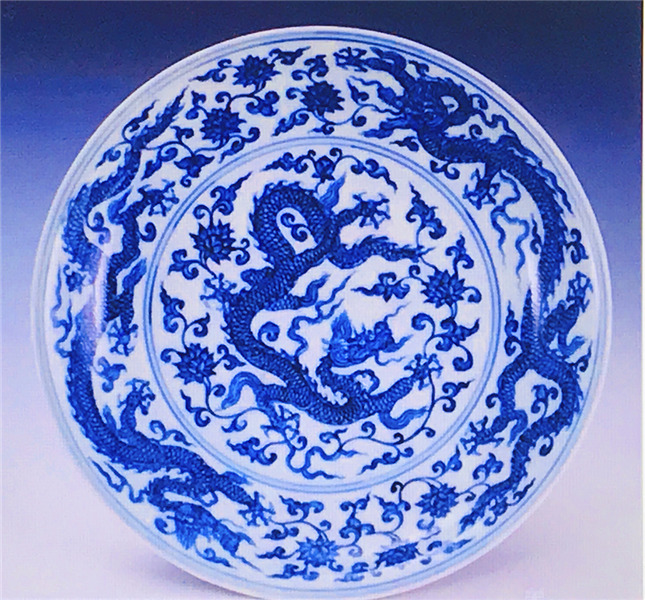
A blue-and-white porcelain disc featuring dragon motifs. [Photo/Official Website of Shanghai Museum]
The virtual exhibition Porcelain works of 15th century China features 285 pieces, selected from the collections of Shanghai Museum, Jingdezhen Porcelain Archaeology Research Institute and 25 other cultural relic conservation organizations in China.
The first of its kind in terms of scale and scope, the exhibition includes ceramic pieces from royal kilns, princes' official kilns and quality works from famous private kilns of the Ming Dynasty (1368-1644), under the reign of emperors Zhengtong, Jingtai and Tianshun, between 1436 and 1464.
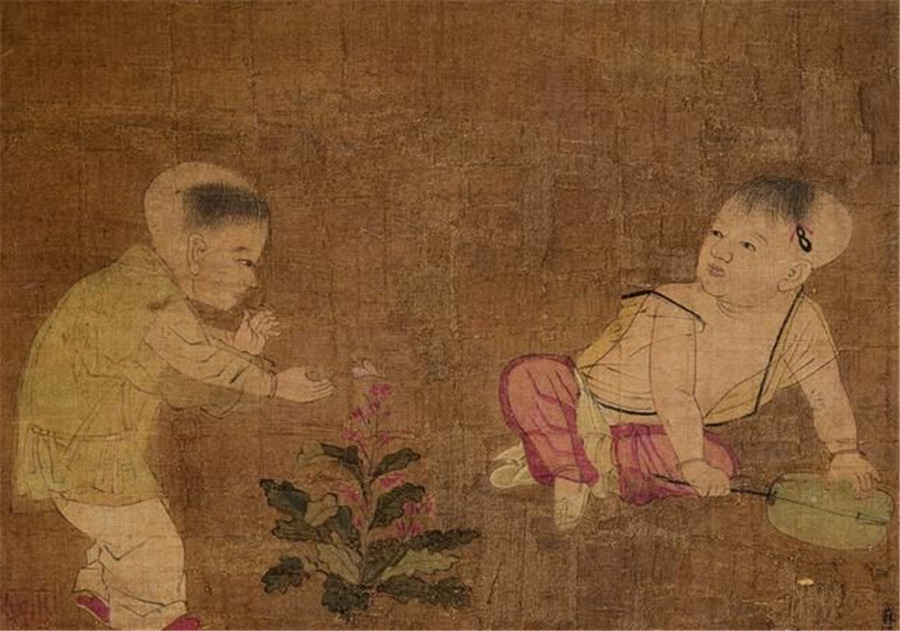
A colored-ink painting on silk depicts two children frolicking outdoors. [Photo/Official Website of Tianjin Museum]
The online exhibition Shining Treasures of Ancient China presents the most-protected items from Tianjin Museum.
The exhibition features 63 pieces, including jade pieces from the Neolithic Age, bronzeware from Western Zhou Dynasty (c. 11th century-771 BC), calligraphic works and ink painting scrolls, landscapes and portraits by Song Dynasty (960-1279) artists and handicrafts from Ming (1368-1644) and Qing (1644-1911) dynasties.
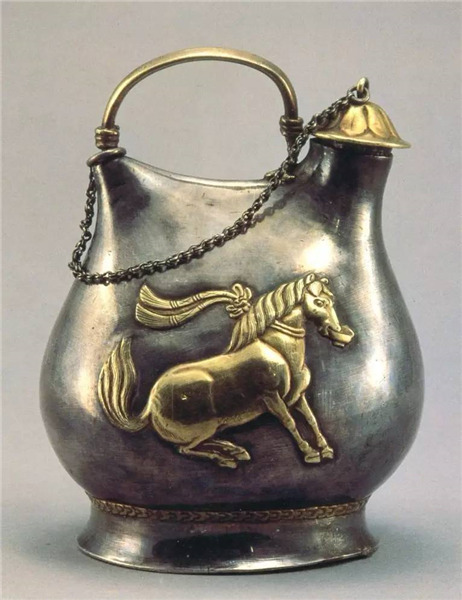
A Tang Dynasty silver flask inscribed with images of a horse carrying a cup in the mouth. [Photo/Official Website of Tianjin Museum]
Athletic culture in ancient China showcases more than 230 sets of exhibits selected from the collections of the Tianjin Museum and 10 other Chinese museums. The seven-part exhibition offers netizens a view of how various sports have developed over millennia in China.
Highlighted cultural relics include a group of Qin Dynasty clay figurines of soldiers doing physical exercise, traditional Chinese equipment for archery, martial arts, polo, wrestling, equestrian and rowing. But the most eye-catching pieces are a jade tablet inscribed with text about breathing and meditation exercise, and a Tang Dynasty silver flask inscribed with images of a horse carrying a cup in the mouth.
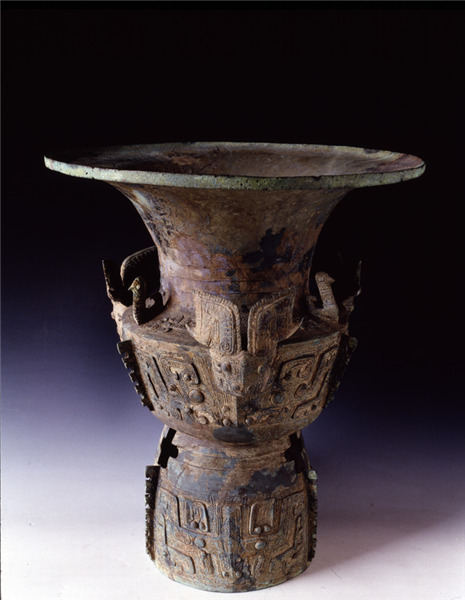
A bronze Zun vessel decorated with motifs of beasts and birds. [Photo/Official Website of Sanxingdui Museum]
Dialogue between bronze vessels from the Yellow River Valley and the Yangtze River Valley encompasses over 135 sets of bronzeware unearthed from ancient ruins at Sanxingdui and Jinsha in Sichuan province, Yinxu in Henan province, Panlongcheng in Hubei province and Ningxiang in Hunan province. These exhibits give the viewers a rare peek into what the best bronze works from the Shang Dynasty (c.16th century-11th century BC) look like, organizers say.
Highlighted national treasures include the simuxin Ding vessel, the only one found so far that carries a human-face motif, a Zun vessel decorated with motifs of beasts and birds and the largest bronze cymbal unearthed so far -- 70 centimeters high, weighing 68 kilograms and inscribed with images of elephants.

A bronze Fu quadrangular food container, used during the Western Zhou Dynasty (c.11th century-771 BC). [Photo/Official Website of Sanxingdui Museum]
Living in China displays 130 sets of ancient bronze works from the Western Zhou Dynasty (c.11th century-771 BC), selected from the collections of seven major museums in Sichuan, Gansu and Shaanxi provinces.
With exquisitely crafted, elegant shapes and carefully inscribed motifs and texts, these showpieces help viewers get an idea how the royal rites were originated and developed in dynastic China.

A bronze table used during sacrificial ceremonies in ancient times. [Photo/Official Website of Sanxingdui Museum]
The virtual exhibition Man and gods -- cultural relics of the maritime silk-road illustrates cultural exchanges and interactions along the ancient trade route, organizers say.
Jointly sponsored by five major museums in Yunnan and Sichuan provinces, the exhibition presents 240 sets of unearthed cultural relics, mostly ritual or funeral objects from the period between the Shang (c.16th century-11th century BC) and Han dynasties (206 BC-AD220).
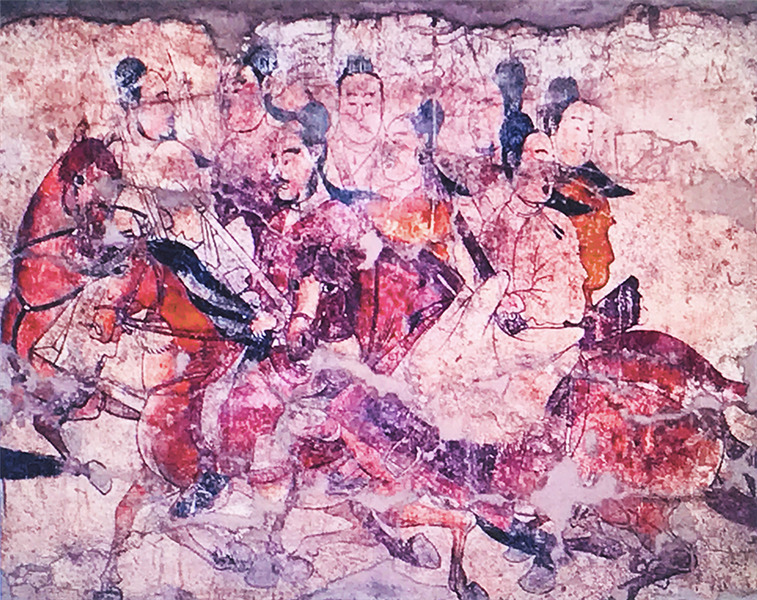
The details of a tomb mural of the Northern Dynasties, found in northern Shanxi province. [Photo/Official Website of Shanxi Provincial Museum]
Northern Dynasties tomb murals in Shanxi province provides viewers an artistic journey back 1,500 years ago.
The virtual exhibition paints a vivid picture of the social and familial life of nomadic people living during the Northern Dynasties (386 -581) in the area known today as Shanxi province. Some tomb murals depict daily activities such as cooking, dining, wining and hunting, others illustrate warfare and still more focus on religious rituals and worldly ceremonies.

An oracle bone on display at the National Museum of Chinese Writing in Anyang, Henan province. [Photo by Zuo Dongchen/For China Daily]
The National Museum of Chinese Writing near the Yin Ruins of Anyang in Central China's Henan province has prepared an online exhibition A history of Chinese writing characters to illustrate the evolution of China's millennia-old writing characters. Yin was the last capital of the Shang Dynasty (c.16th century-11th century BC) and the official excavation of the Yin Ruins in today's Anyang began as early as in 1928.
The Chinese language is one of the oldest writing systems in the world, still actively in use in China and other parts of East Asia. It consists of tens of thousands of individual characters, each with a unique meaning. Oracle-bone scripts, aka jiaguwen in Chinese, are considered to be the earliest form of Chinese characters. Oracle-bone inscriptions were included on the list of UNESCO Memory of the World International Register on Oct 31, 2017.
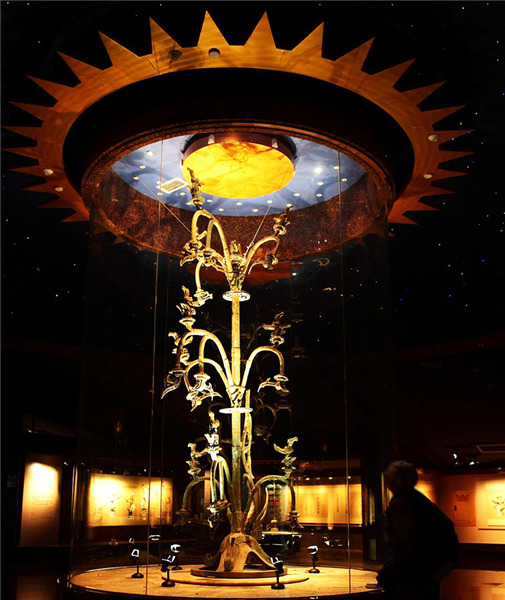
A visitor takes a close look at a bronze sculpture at Sanxingdui Museum in Guanghang, Sichuan province on Oct 1, 2017. [Photo/Official Website of Sanxingdui Museum]
Discovering the Sanxingdui Ruins offers viewers an online tour of Sanxingdui Museum in Guanghan, Southwest China's Sichuan province, with 286 sets of unearthed cultural relics, six of which have been recognized as top-rank national treasures.
Sanxingdui is the ruins of the capital of the ancient Shu Kingdom that existed over 4,000 years ago. The site covers an area of 120,000 square meters. A great number of relics, excavated in 1986 at the site, have proved the upper reaches of the Yangtze and Yellow River region are both cradles of the Chinese civilization.
Yang Xiaoyu contributed to the story.

